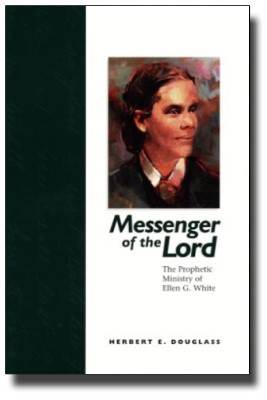
Chapter
. Preface
1. The Revealer and the Revealed
2. God Speaks Through Prophets
3. Characteristics of the Prophets
5. Messenger, Wife, and Mother
9. Humor, Common Sense, and a Practical Counselor
10. The American Pioneer and the Victorian Woman
15. Timely Instruction and Predictions
16. Ellen White’s Self-awareness as a Messenger
17. Organization, Unity, and Institutional Development
19. Evangelism, Local and Global, and Race Relations
20. Stewardship, Government Relations, and Humanitarian Involvement
21. Dissidents, Within and Without
23. Clarification of Major Doctrines
24. Emergence of a Health Message
25. Relationship of Health to a Spiritual Mission
26. Quality Improvement in Adventist Health
28. Reviewing a Century of Health Reform Principles
30. Establishing Educational Institutions
31. Publishing, Temperance, and Social Principles
32. Basic Principles
33. Basic Rules of Interpretation—Internal
34. Basic Rules of Interpretation—External
35. Characteristics Shared by Biblical Writers and Ellen White
36. Authority and Relationship to the Bible
37. How Contemporaries Understood Ellen White’s Authority
38. 1919 Bible Conference—History Teachers Council
39. Understanding How the Books Were Written
40. Understanding How the Books Were Prepared
41. Truth Still Makes One Free
42. Criticism Involving Relationships With Other People
43. Predictions, Scientific Observations, and Unusual Statements
44. The Shut Door—A Case Study
45. Does Ellen White Measure Up?
46. She Still Speaks
47. Messenger and Message Inseparable
Appendices:
A. Camp Meetings in Early Nineteenth Century
B. Background to Exchange of Letters Between James and Ellen White in 1874
C. Excerpts from Robert Louis Stevenson’s Across the Plains (1892)
D. A Partial List of Ellen G. White Visions
E. Basic Presuppositions Shared by Most Shut-door Critics
F. Time-conditioned or Time-related?
G. Ellen White’s Growth in Understanding Her Own Visions
H. Ellen White Enriched the Term “Shut Door”
I. Ellen White Led the Way in Building a Biblically-Oriented Message for the World
J. Response to Deletion of “Wicked World”
K. Why Ellen White Seemed to Reach Out Only to Shut-door Advocates
L. Chief Charges Against Ellen White Regarding the Shut-door Issue and the Responses Through the Years
M. The July 13, 1847, Letter to Joseph Bates
N. Last Will and Testament of Ellen G. White
O. Comments of National Leaders in the Early 1860s Regarding Slavery Crisis

